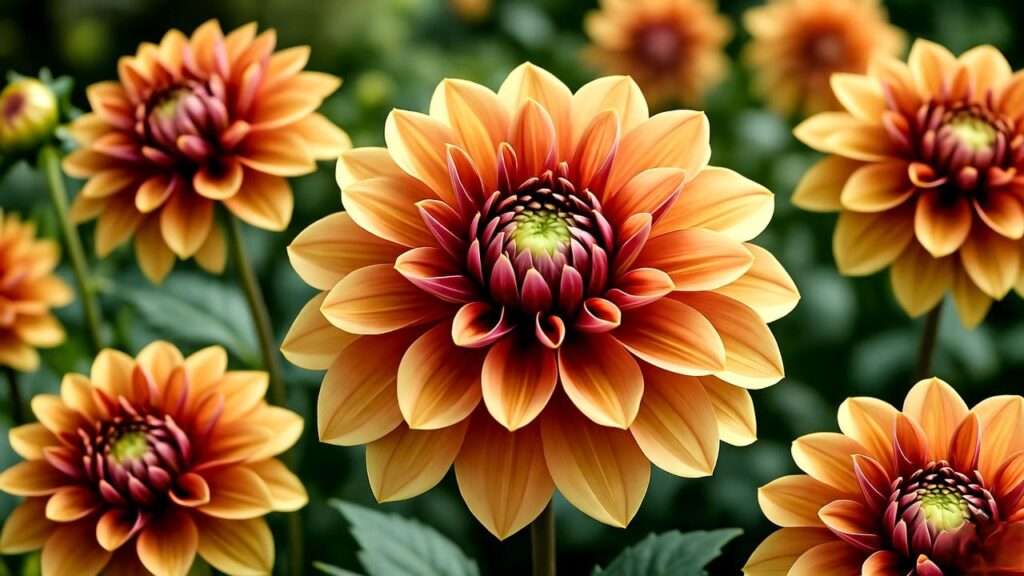Imagine your garden bursting with vibrant dahlias, their bold colors and intricate shapes stealing the show from summer to fall. These stunning flowers can transform any outdoor space, but their success hinges on one critical factor: timing. Knowing when to plant dahlias is the key to unlocking their full potential, ensuring healthy growth and dazzling blooms. Whether you’re a seasoned gardener or a beginner, the confusion around planting schedules—especially with varying climates—can be daunting. Fear not! This comprehensive guide, crafted by horticultural experts, simplifies the process with actionable steps, regional insights, and proven tips to help you plant dahlias at the perfect time for a showstopping garden. 🌷
Dahlias are frost-sensitive beauties, and planting them at the wrong time can lead to disappointing results. In this article, we’ll cover everything from soil temperature requirements to region-specific planting schedules, ensuring you have the knowledge to grow thriving dahlias. With expert advice, practical examples, and answers to common questions, you’ll be equipped to create a garden that turns heads. Let’s dive into the world of dahlias and discover how to time your planting for maximum impact! 🌿
Section 1: Understanding Dahlias and Their Growing Needs 🌱
What Makes Dahlias Special? 🌟
Dahlias are the rock stars of the flower world, celebrated for their diversity in size, color, and form. From petite pompons to dinner-plate-sized blooms, these tuberous perennials offer something for every garden aesthetic. Native to Mexico, dahlias have been cultivated for centuries, earning a place in gardens worldwide for their ability to bloom profusely from midsummer to the first frost. Their versatility makes them ideal for borders, containers, or cut flower arrangements.
However, dahlias are not low-maintenance divas. Their growth cycle is highly dependent on proper planting timing, which directly impacts their ability to establish strong roots and produce vibrant flowers. Understanding their unique needs is the first step to mastering when to plant dahlias.
Key Factors Influencing Dahlia Planting Time 🕰️
Several environmental factors determine the ideal planting window for dahlias:
- Soil Temperature: Dahlia tubers require soil temperatures of at least 60°F (15°C) to sprout successfully. Planting in cold soil can cause tubers to rot or delay growth.
- Frost Sensitivity: Dahlias are tender perennials that cannot tolerate frost. Planting must occur after the last frost date in your region to avoid damage.
- Sunlight and Day Length: Dahlias thrive in full sun, requiring at least 6–8 hours of direct sunlight daily. Longer daylight hours in late spring and summer promote robust blooming.
- Climate Zones: Your geographic location and USDA Hardiness Zone play a significant role in determining planting time, as climates vary widely.
By aligning your planting schedule with these factors, you’ll set your dahlias up for success. Let’s explore the best times to plant based on seasons and regions.
Section 2: When to Plant Dahlias: A Season-by-Season Guide 📅
Spring Planting for Most Regions 🌷
For most gardeners, spring is the prime time to plant dahlias. The goal is to plant tubers after the last frost date, when soil temperatures are consistently above 60°F (15°C). This typically falls between mid-April and late May in many regions, though exact dates vary by location. For example:
- In USDA Zones 3–6 (colder climates like Minnesota or Maine), planting often occurs in late May or early June.
- In Zones 7–8 (temperate areas like Virginia or Oregon), mid-April to early May is ideal.
To determine your last frost date, consult resources like the National Gardening Association or your local cooperative extension service. Expert Tip: Use a soil thermometer to confirm that your garden soil is warm enough before planting. This small investment can prevent costly mistakes!
Steps for Spring Planting:
- Select a sunny, well-drained site.
- Dig a hole 4–6 inches deep for each tuber.
- Place the tuber with the “eye” (growth point) facing up.
- Cover with soil, water lightly, and add mulch to retain moisture.
Early Spring Indoor Starts for Colder Climates ❄️
In colder regions (Zones 3–5), where the growing season is shorter, starting dahlias indoors can give you a head start. Begin 4–6 weeks before your last frost date, typically in March or early April. This method allows tubers to develop roots and sprouts indoors, ready for transplanting once the weather warms.
How to Start Dahlias Indoors:
- Fill pots or trays with a well-draining potting mix.
- Plant tubers 2–3 inches deep and place in a warm, sunny spot (or under grow lights).
- Keep soil moist but not soggy.
- Transplant outdoors after the last frost, hardening off plants for 7–10 days to acclimate them.
Case Study: Jane, a gardener in Zone 5 (Wisconsin), started her dahlia tubers indoors in early April 2024. By mid-May, her plants were thriving, and she enjoyed blooms by July—weeks earlier than her neighbors who planted directly outdoors.
Late Spring or Early Summer Planting for Warmer Climates ☀️
In warmer regions (Zones 8–10, such as California or Florida), you have more flexibility. Late spring to early summer planting (April to June) works well, as long as temperatures don’t exceed 85°F (29°C) consistently, which can stress young plants. Ensure adequate watering to combat heat and maintain soil moisture.
Tips for Warm Climates:
- Plant in a spot with morning sun and afternoon shade if summers are intense.
- Use organic mulch (e.g., straw or bark) to keep soil cool and moist.
- Monitor for pests like aphids, which thrive in warm weather.
Fall Planting in Specific Regions 🍂
In mild-winter areas (Zones 9–11, such as parts of Southern California or coastal Australia), fall planting is viable. Planting in September or October allows tubers to establish roots during cooler months, leading to early spring blooms. However, fall planting is not recommended for colder climates, where tubers must be dug up and stored to survive winter frost.
Pros and Cons of Fall Planting:
- Pros: Earlier blooms, less competition with spring garden tasks.
- Cons: Risk of rot in overly wet winter soils; not suitable for regions with freezing temperatures.
For colder zones, dig up tubers after the first frost, clean them, and store in a cool, dry place (40–50°F/4–10°C) until spring planting.
Section 3: Regional Planting Guide for Dahlias 🌎
Planting Dahlias in the United States 🇺🇸
Your planting schedule depends on your USDA Hardiness Zone:
- Zones 3–6 (e.g., Midwest, Northeast): Plant in late May to early June after the last frost. Indoor starts in March or April can extend the growing season.
- Zones 7–8 (e.g., Mid-Atlantic, Pacific Northwest): Plant in mid-April to early May. Soil temperatures are usually ideal by this time.
- Zones 9–11 (e.g., Southern California, Florida): Plant in early spring (March–April) or fall (September–October) for best results.
State-Specific Examples:
- California (Zone 9): Plant in March or October for coastal areas; avoid summer heat in inland regions.
- New York (Zone 6): Wait until late May to plant outdoors or start indoors in early April.
- Texas (Zone 8): Plant in mid-April, ensuring good drainage to prevent tuber rot in humid conditions.
Check local weather data or consult your state’s cooperative extension for precise timing.
Planting Dahlias Internationally 🌍
Dahlia planting varies globally due to diverse climates:
- United Kingdom: Plant in late April to May (after the last frost). Indoor starts in March are common in colder areas like Scotland.
- Australia: In the Southern Hemisphere, plant in September or October (spring) for summer blooms. Coastal areas like Sydney may allow year-round planting.
- Canada: Similar to colder U.S. zones, plant in late May or June (Zones 3–5). Indoor starts are popular in Ontario and British Columbia.
Expert Insight: Dr. Emily Carter, a horticulturist with the Royal Horticultural Society, notes, “Dahlias thrive when planted at the right time for your climate. In the UK, waiting until soil temperatures hit 15°C ensures strong root development.”
Section 4: Step-by-Step Guide to Planting Dahlias 🌿
Preparing Your Garden for Dahlias 🛠️
Before planting, set the stage for healthy dahlia growth by choosing the right location and preparing the soil. Dahlias need a site with:
- Full Sun: At least 6–8 hours of direct sunlight daily for optimal blooming.
- Well-Drained Soil: Dahlias dislike “wet feet,” so avoid low-lying areas prone to waterlogging.
- Good Air Circulation: Space plants to prevent fungal issues.
Soil Preparation Steps:
- Test soil pH (ideal range: 6.5–7.0). Amend with lime to raise pH or sulfur to lower it, if needed.
- Incorporate organic matter like compost or well-rotted manure to improve soil fertility and drainage.
- Loosen soil to a depth of 12 inches to encourage deep root growth.
- Pro Tip: Add a balanced organic fertilizer (e.g., 5-10-10) to give tubers a nutrient boost at planting time.
Tools Needed:
- Shovel or garden fork
- Soil thermometer
- Stakes or supports for taller varieties
- Organic mulch (e.g., straw, wood chips)
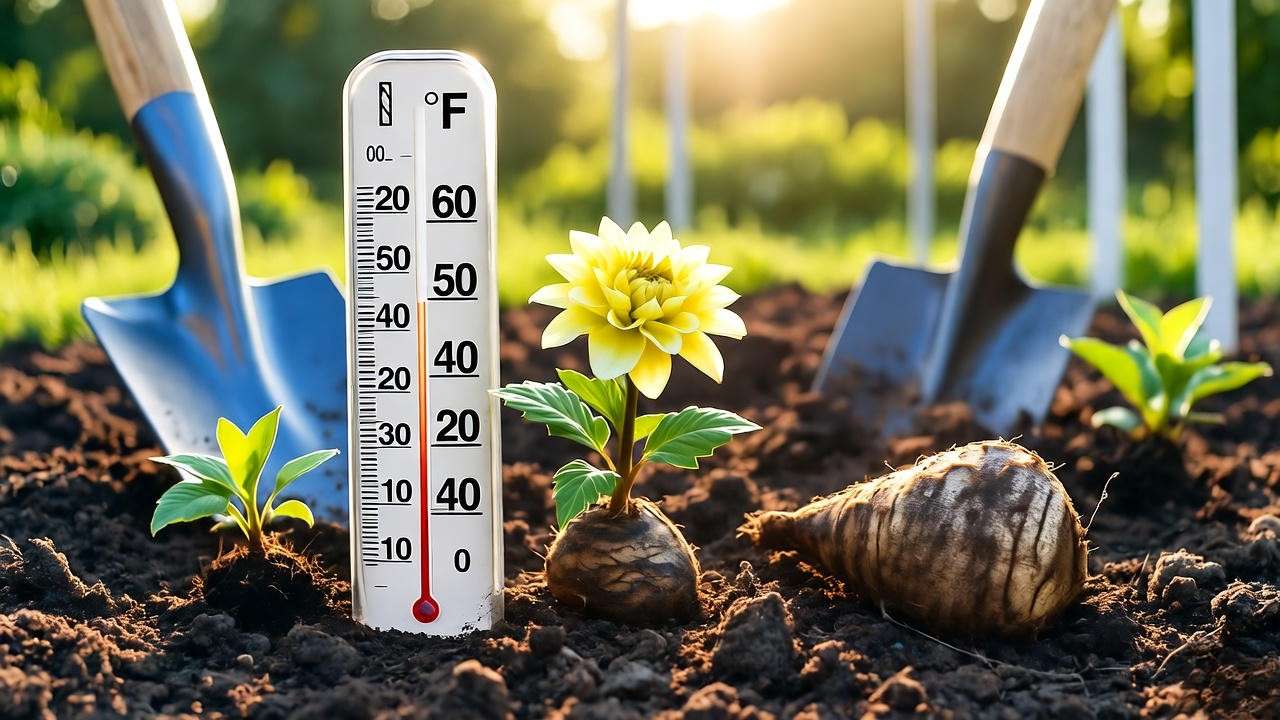
How to Plant Dahlia Tubers Correctly 🌱
Planting dahlia tubers is straightforward if you follow these steps:
- Dig the Hole: Create a hole 4–6 inches deep and 12–18 inches wide, depending on the variety’s mature size.
- Position the Tuber: Place the tuber horizontally with the “eye” (sprout) facing up. If no eye is visible, position the tuber where it connects to the old stem.
- Cover and Water: Fill the hole with soil, water lightly to settle the soil, and avoid overwatering until sprouts emerge.
- Space Appropriately: Space tubers 12–18 inches apart for smaller varieties and up to 3 feet for larger ones.
- Mulch: Apply a 2-inch layer of organic mulch to retain moisture and suppress weeds.
Common Mistakes to Avoid:
- Planting too early in cold soil, risking rot.
- Overwatering before sprouts appear, which can suffocate tubers.
- Planting tubers upside down, delaying or preventing growth.
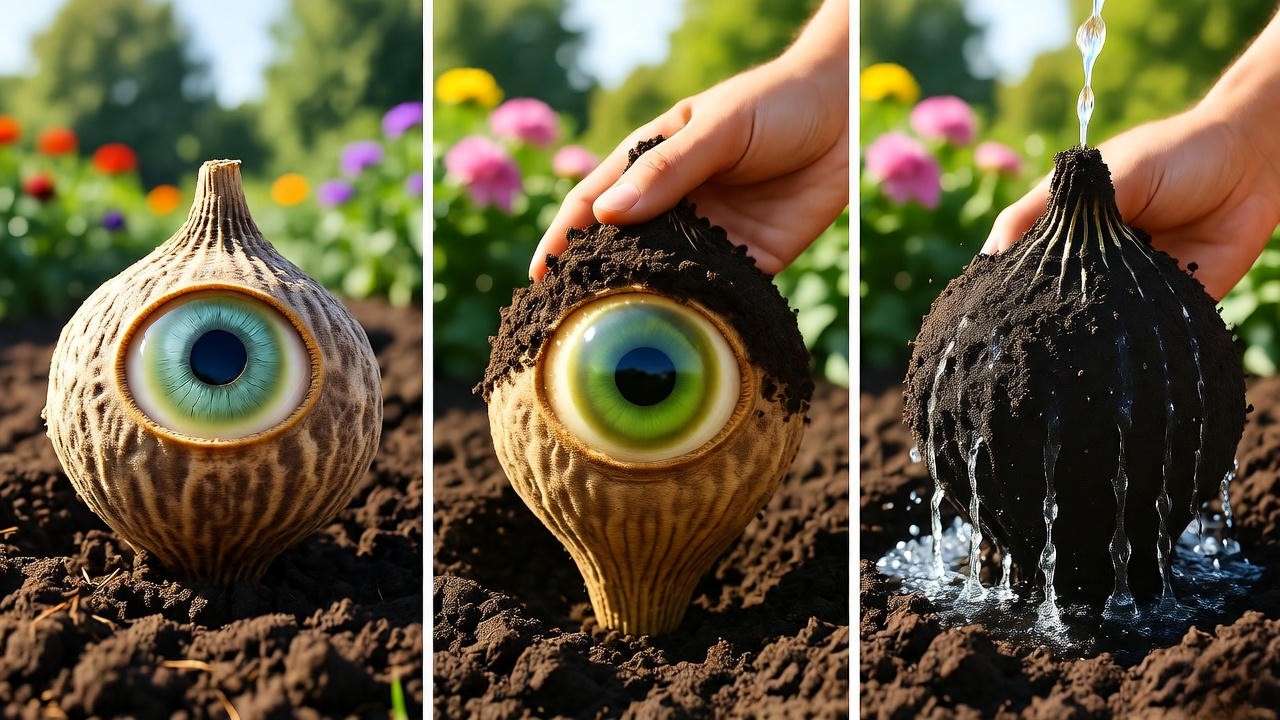
Growing Dahlias from Seeds or Cuttings 🌼
While tubers are the most common way to grow dahlias, you can also start them from seeds or cuttings:
- Seeds: Start seeds indoors 6–8 weeks before the last frost (February–March in most regions). Seeds are less predictable than tubers but offer unique varieties. Transplant seedlings outdoors after hardening off.
- Cuttings: Take cuttings from sprouted tubers in early spring. Root them in a moist, sterile medium under grow lights. This method is ideal for multiplying rare or expensive varieties.
- Timing Consideration: Seeds and cuttings require an earlier start (late winter to early spring) compared to tubers.
Pros and Cons:
- Seeds: Affordable, diverse genetics, but slower to bloom and less predictable.
- Cuttings: Identical to the parent plant, faster than seeds, but require more skill.
- Tubers: Easiest and most reliable for consistent blooms.
Section 5: Caring for Dahlias After Planting 🌺
Watering and Fertilizing Dahlias 💧
Proper care after planting ensures your dahlias thrive:
- Watering: Keep soil consistently moist but not waterlogged. Water deeply once or twice a week, depending on weather. Avoid overhead watering to prevent fungal diseases.
- Fertilizing: Use a low-nitrogen, high-potassium fertilizer (e.g., 5-10-10 or 0-10-10) every 3–4 weeks during the growing season. Avoid high-nitrogen fertilizers, which promote leafy growth over blooms.
- Pro Tip: Adjust watering based on weather patterns. In hot, dry conditions, check soil moisture daily to prevent stress.
Supporting and Pruning Dahlias 🌿
Dahlias, especially tall varieties, need support to prevent stems from snapping:
- Staking: Install stakes or cages at planting time to avoid disturbing roots later. Use soft ties to secure stems.
- Pinching: When plants reach 12–18 inches tall, pinch off the top growth to encourage bushier plants and more blooms.
- Deadheading: Remove spent flowers regularly to promote continuous blooming through fall.
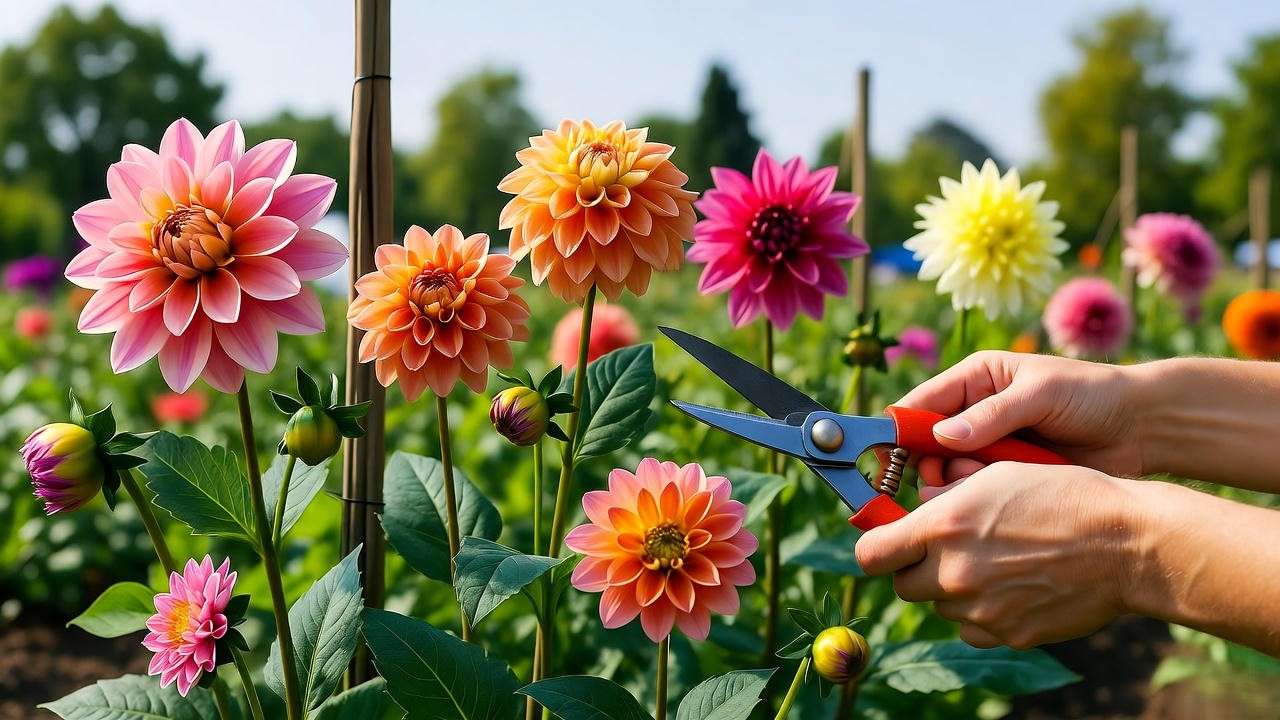
Pest and Disease Management 🐞
Dahlias are susceptible to a few pests and diseases, but proactive care minimizes issues:
- Pests: Aphids, spider mites, and slugs are common culprits. Use insecticidal soap or neem oil for organic control. Hand-pick slugs in the evening or use traps.
- Diseases: Powdery mildew and root rot are risks in humid or poorly drained conditions. Ensure good air circulation and avoid overwatering. Apply a fungicide if mildew appears.
- Expert Advice: Dr. Sarah Thompson, a plant pathologist, recommends, “Regularly inspect dahlia foliage for early signs of pests or disease. Early intervention is key to keeping plants healthy.”
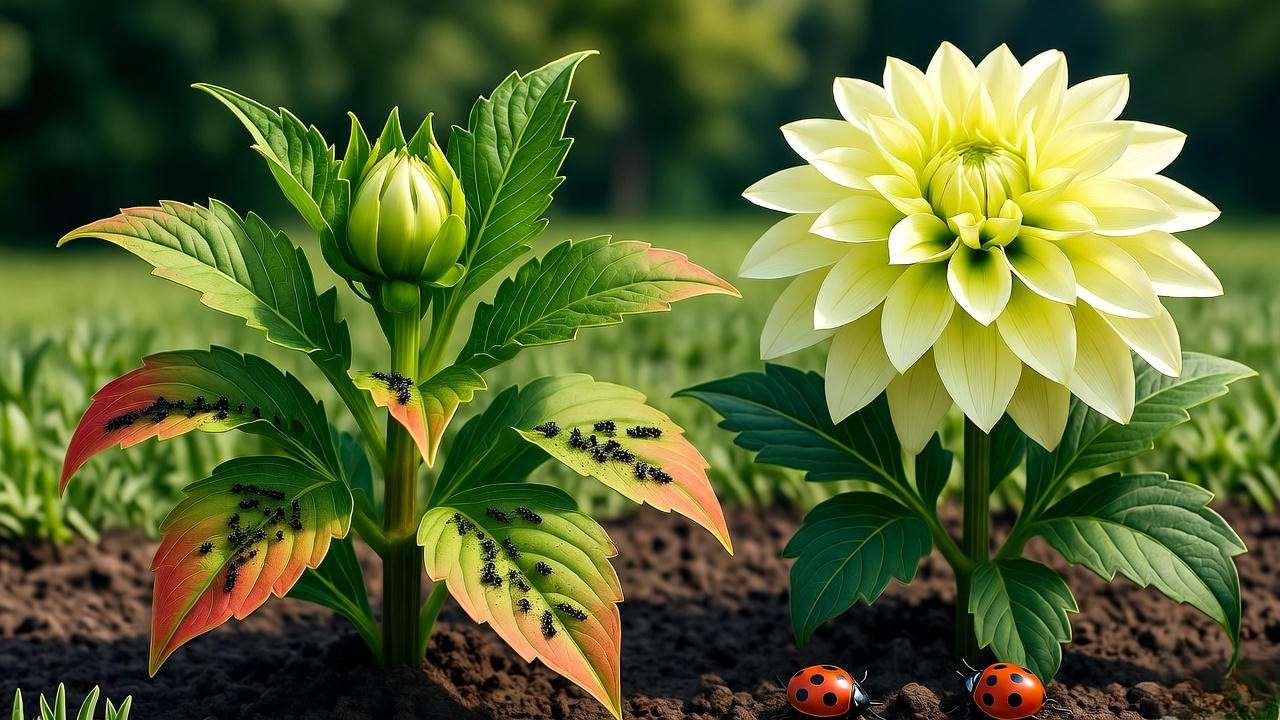
Section 6: Troubleshooting Common Dahlia Planting Issues ⚠️
Even with perfect timing, issues can arise. Here’s how to address common problems:
- No Blooms: Often caused by planting too late, insufficient sunlight, or excessive nitrogen. Ensure 6–8 hours of sun and use a bloom-focused fertilizer.
- Tuber Rot: Results from cold, wet soil or overwatering. Plant only when soil is warm and well-drained, and avoid watering until sprouts emerge.
- Weak Growth: May indicate poor soil fertility or pest damage. Test soil and amend with compost; inspect for aphids or spider mites.
- Missed Planting Window: If you miss spring planting, start tubers in pots indoors or wait for fall in mild climates (Zones 9–11).
Section 7: FAQs About When to Plant Dahlias ❓
Q: Can I plant dahlias in summer if I missed spring?
A: In warmer climates (Zones 8–10), early summer planting is possible if temperatures are moderate. Use extra mulch and water consistently to help plants establish.
Q: How do I know if my soil is warm enough for dahlias?
A: Use a soil thermometer to confirm a temperature of at least 60°F (15°C). Alternatively, wait 2–3 weeks after the last frost for natural soil warming.
Q: Should I plant dahlias in containers or directly in the ground?
A: Both work! Containers are great for small spaces or colder climates (move indoors during frost). Use a pot at least 12 inches deep with drainage holes.
Q: What happens if I plant dahlias too early?
A: Planting in cold or wet soil risks tuber rot or stunted growth. Wait until soil temperatures are consistently above 60°F to avoid issues.
Section 8: Expert Tips for Maximizing Dahlia Blooms 🌸
- Companion Planting: Pair dahlias with salvia, cosmos, or zinnias for a vibrant display and to attract pollinators like bees.
- Extend Bloom Time: Plant early-, mid-, and late-season dahlia varieties for continuous flowers from summer to fall.
- Storage for Next Season: After the first frost, dig up tubers, clean them, and store in a cool, dry place (40–50°F) in peat moss or sawdust.
- Gardener’s Story: Maria, a dahlia enthusiast in Oregon, timed her planting for mid-April 2024. By pairing early and late varieties and pinching regularly, her garden bloomed vibrantly from July to October.
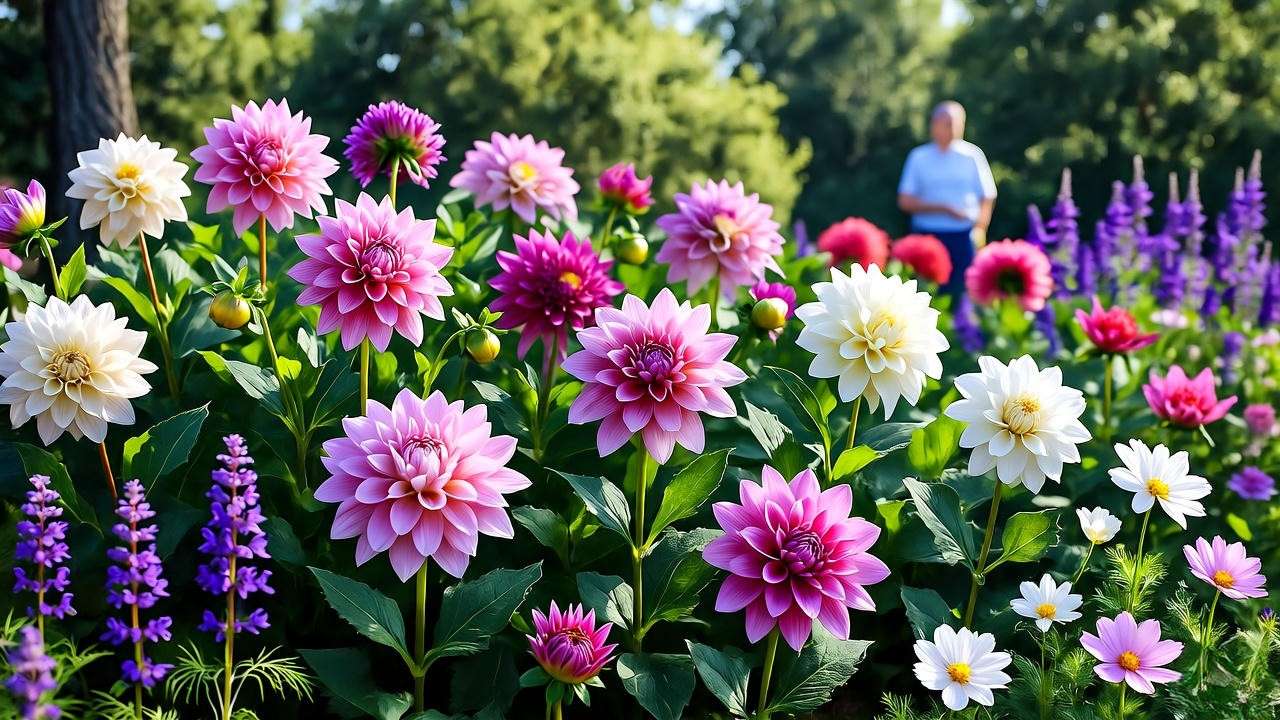
Conclusion: Your Path to a Stunning Dahlia Garden 🎉
Timing is everything when it comes to planting dahlias for vibrant blooms. By understanding your region’s climate, soil conditions, and frost dates, you can plant at the perfect moment to ensure healthy growth and stunning flowers. This guide has equipped you with expert-backed steps, from spring planting to post-planting care, tailored to gardeners worldwide. Whether you’re in a cold Zone 5 or a sunny Zone 9, you now have the tools to create a dahlia garden that dazzles.
Start planning your dahlia garden today! Use our regional tips, check your last frost date, and get those tubers in the ground. Share your blooming success with us on social media using #DahliaDreams, and explore our related articles on dahlia care and variety selection for more inspiration. Happy planting! 🌷

